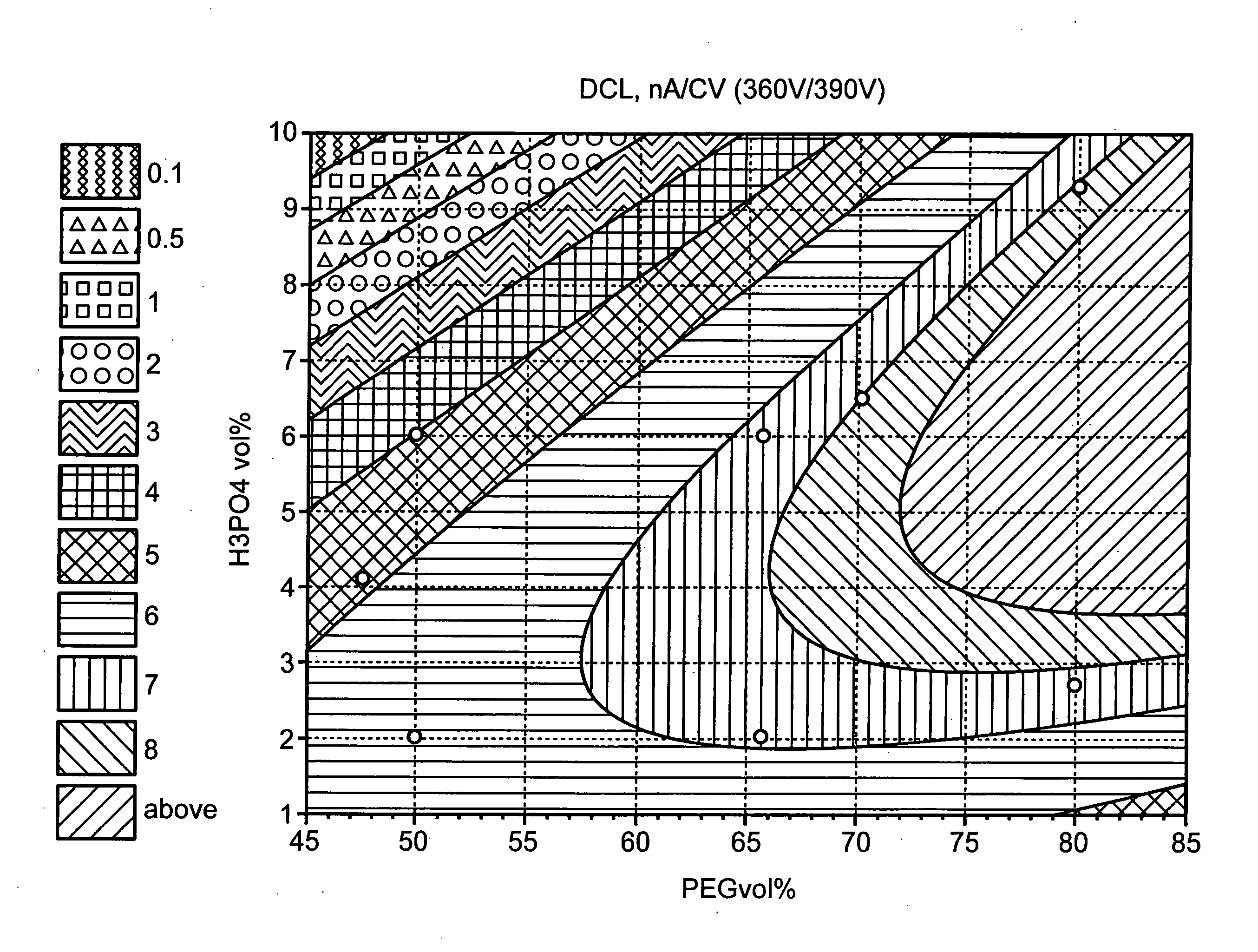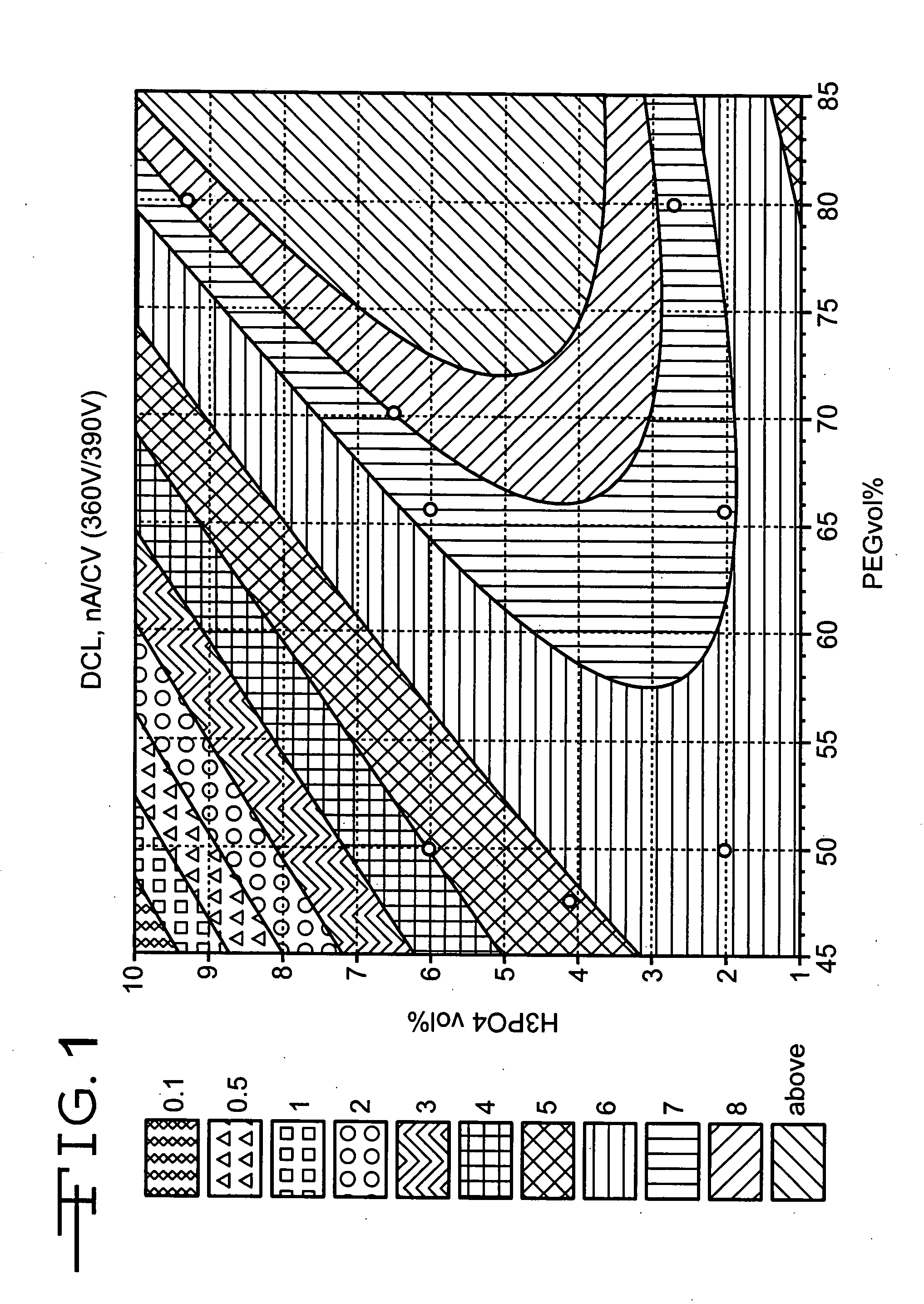Anodizing electrolytes for high voltage capacitor anodes
an anode and capacitor technology, applied in the field of low temperature anodizing electrolyte, can solve the problems of toxic ethylene glycol, too viscosity, ethers do not provide the requisite solubility and low viscosity
- Summary
- Abstract
- Description
- Claims
- Application Information
AI Technical Summary
Benefits of technology
Problems solved by technology
Method used
Image
Examples
Embodiment Construction
[0019] The present invention is directed to an electrolyte for anodizing valve metals, particularly for use in high voltage electrolytic capacitors. The valve metals are anodized in this electrolyte at temperatures below sixty degrees Celsius. Such an electrolyte allows for the anodizing of valve metals with little gray-out at high voltages and minimal breakdown. The resulting high quality oxide has low DC leakage and provides stable long-term anode performance.
[0020] Valve metals include, and are not limited to, tantalum, aluminum, niobium, titanium, zirconium, hafnium, and alloys thereof. When such valve metals are used as an anode in an electrolytic capacitor, they can be in the form of foil (etched or unetched), pressed and sintered powder pellet or other porous structures. For tantalum electrolyte capacitor, the tantalum anodes are typically in the form of a pressed / sintered tantalum powder pellet. Beam melt, sodium reduction, or other processes produce the tantalum powders. T...
PUM
| Property | Measurement | Unit |
|---|---|---|
| temperature | aaaaa | aaaaa |
| temperature | aaaaa | aaaaa |
| temperature | aaaaa | aaaaa |
Abstract
Description
Claims
Application Information
 Login to View More
Login to View More - R&D
- Intellectual Property
- Life Sciences
- Materials
- Tech Scout
- Unparalleled Data Quality
- Higher Quality Content
- 60% Fewer Hallucinations
Browse by: Latest US Patents, China's latest patents, Technical Efficacy Thesaurus, Application Domain, Technology Topic, Popular Technical Reports.
© 2025 PatSnap. All rights reserved.Legal|Privacy policy|Modern Slavery Act Transparency Statement|Sitemap|About US| Contact US: help@patsnap.com



